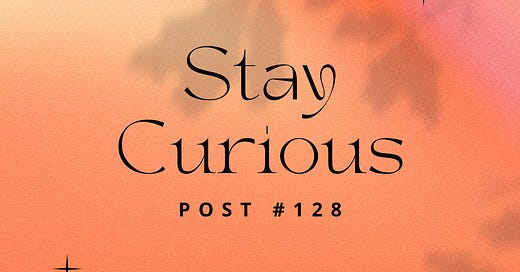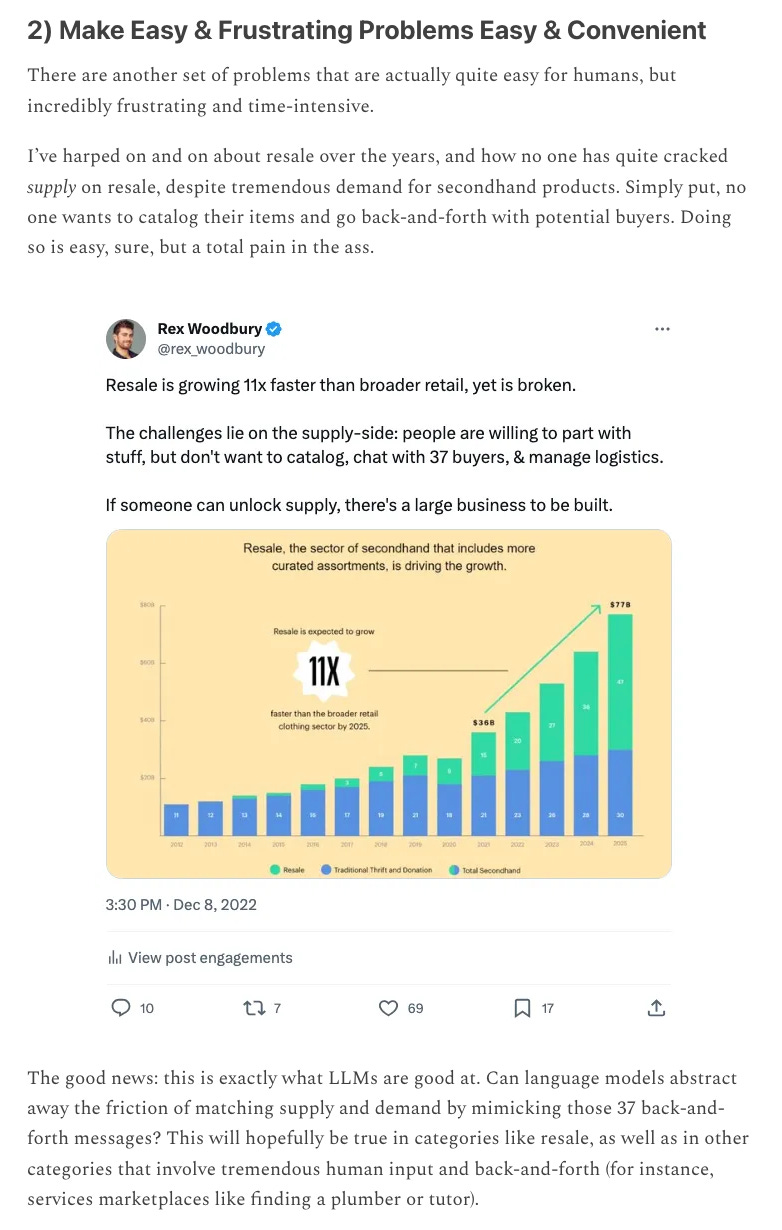📚 Multi-threaded meetings, Incrementality In advertising, LLM for dummies, Teaching iteration
Ideas from Seth Godin, Shishir Mehrotra, Rex Woodbury, Jason Fried and more
Hi, this is post #128.
Seth Godin shared another banger of a short post. Here it goes
Good pizza is rare, even though the method to create it is well known.
Any efforts to make it more convenient, cheaper or easier will almost always make it worse.
If you think this post is about pizza, I’m afraid that we’re already stuck.
That’s it. That was the post.
Quality is repeatable. However, the recipe may not allow for “convenience, cost saving or less effort”.
I don’t have anything else to add to that. Let’s take a quick look at today’s ideas:.
🗓️ Multi-threaded meetings
📈 Incrementality in advertising
🤓 LLM for dummies
🔋 Source of power
♾️ Teaching iteration
💰 Understanding poverty line
And much more
Let’s get started.
1. Multi-threaded Meetings
Let’s get the jargons sorted out first:
… a single-threaded discussion has one topic at a time. Everyone pays attention, and if you want to change the topic, you have to change it for everyone.
But think about when you have a multi-threaded event, you might picture a conference or a happy hour. Everyone splits into small groups and many topics are discussed at once.
Shishir Mehrotra goes on to make the case for creating more multi-threaded meetings.
It turns out that most of our work meetings are naturally single-threaded. Interestingly, this creates a cascade of perverse side effects. You end up discussing only “majority topics” (topics that a majority of attendees would engage in). This then leads to creating substantially more meetings, as each sub-group of attendees needs their own forums. Also, since a single threaded forum can’t be driven by multiple parties, you increase the “loudest voice” effect.
But despite all these cons, single-threaded meetings are the default “best practice” for teams. All the meeting pundits implicitly advocate for it: have a single agenda, be clear on your goal, keep everyone focused on one task at a time. Meeting rooms are structured with a single table, side chatter is quickly shut down as interruptive. And as teams became more distributed, we replicated these behaviors in Zoom, where we highlight one speaker at a time, and “raise hands” to ensure a steady progression of the single-threaded agenda.
He has listed four examples of multi-threaded meeting templates that he has studied in different teams - Youtube’s bullpen, Zapier’s silent health check, Stripe’s pin the wheel and Coda’s “10x decision” catalyst.
These are some interesting rituals. Their design points to underlying issues that are quite prevalent in most meetings & team setup. You can easily pick up a trick or two from these templates to make your meetings better.
If you liked this one, you can check out posts #115, #69, #58 and #57 for some of his other ideas.
2. Incrementality In Advertising
Just this week, we were discussing the impact of a reactivation program that my team was running. And it was not long before that we hit the question of how to measure ‘true impact’. Our challenge was to identify what Casey Stump has described as “incrementality in advertising.”
Here’s a broad definition, in case you need more context.
The problem is that these ad networks often show ads to people who might have converted without seeing the ad, even though the ad network will still take credit for the conversion. In order to know the true value of your advertising, you would need to know how many conversions would have happened without the ads.
The world of medicine has a corollary here. If you’re testing a new drug on a group of people, you don’t just want to know how many people have positive outcomes after taking the drug. You want to know how many people have positive outcomes compared to the number of positive outcomes in a control group that received a placebo. That incremental lift is the true impact of the drug, or for a marketer, the impact of an advertising campaign.
Casey uses simple examples to expand on the idea. It’s surprising that something as basic as this can be missing in many performance reviews.
Thanks for sharing this one.
3. LLM for Dummies
What goes behind ChatGPT and other generative AI models? To understand the basics, Rex Woodbury’s LLMs for Dummies is a good starting point. It offers a fairly simple explanation of what LLMs are and how they work.
Not too technical and with only a few jargons - just as the title suggests.
Plus there are some suggested frameworks for putting LLMs to better use.
I loved this particular bit from the application side.
4. Source of Power
Jimmy Koppel makes the following observation in “Source of power”
I think this a fairly common pattern: a lot of what’s involved in making it to the top of anything is not being better at things than other people, but outright being able to do things they can’t. In business, they call it a “competitive advantage.” Peter Thiel calls it a “secret”. For personal life, I like to call it a “source of power.”
I read his ‘source of power’ analogy as building the ability to ‘connect the dots’. You become better at it, when you’re able to see the dots for beyond what they are. It comes from your experiences as well as from learning from other fields. Your awareness & curiosity can guide you in this path.
What do you do to become better at “connecting the dots” ?
5. Teaching Iteration
I love Jason Fried’s writing for two reasons: 1) he writes about diverse topics, and 2) his writing has less jargon (in fact less words) per post than most out there.
This latest one around teaching iteration is a good example. He writes as an answer to “what will he change in the current education system”. I love this question, as it points out things that one found useful in their life but did not learn in our schooling system.
Here’s a bit that sums up his post well:
So there, I guess that’s my initial idea to improve the educational system. Teach problem solving through iteration. Bounce things back to people for a second or third try. And then a fourth and a fifth. And so on. Require them to bring new perspectives. Demonstrate how time, space, and chance are on your side — they give you the opportunity to wander around with an idea and take it in new directions. Iteration is evolution. Hopefully what’s next is better than what came before it.
6. Light reads & videos
Some interesting blogs & videos from not so usual topics of interest.
Between the Lines: A history of the most important concept in global poverty by Ranil Dissanayake
Rowntree was choosing such a penurious poverty line so that no reasonable person could oppose some form of relief for those living below it, an approach we will see repeated time and again as the poverty line measurement methods spread around the world.
Check out the Gapminder.org page for a glimpse of life that we can hardly imagine.
The '3.5% rule': How a small minority can change the world by David Robson
By engaging broad support across the population, nonviolent campaigns are also more likely to win support among the police and the military – the very groups that the government should be leaning on to bring about order.
7. Everything else
Some random goodness from the internet:
Floydian Cooks (@Floydiancookery) tells food stories. Such a beautiful mix of different forms of expressions - storytelling, cooking, entertaining.
Jane Housham (@foundandchosen) is “anti-Marie Kondo” collector and curator of tiny things. Her Instagram feed is simply mind-blowing!
A Daily Cloud ☁️ (@adailycloud) reminds me of the game that we should play more often. Follow them to get a happy cloud art in your feed every day.
That's all for this week, folks!
I hope I've earned the privilege of your time.
Please leave a comment or send a message with your feedback. It’s highly helpful & encouraging. If that’s too much of an effort (or not required), at least hit the ❤️ at the start or end of the post to show your love.




